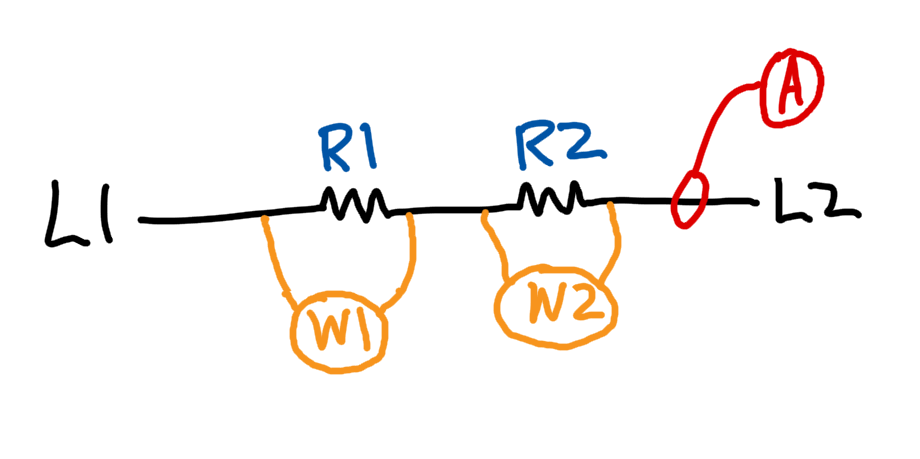Forum Replies Created
-
AuthorPosts
-
Here’s the image for that question:

It is L1-L2
Another student shared it recently:
Also see the email I just sent you.
A shunt is a deliberate branch of a circuit that has NO resistance and bypasses a load.
Does this help you see the function of the closed detector switch in this scenario?
Loads do not “call” for electrons.
The commonly-used term “current draw” is misleading, unfortunately.
Samurai says this a lot in his videos: voltage drives current.
If voltage is present, and there is a closed circuit, current will flow.
I said this a lot in our discussion of Question 9.
Here are a few quick assignments:
1. Go to Unit 1 (Basic Electricity) and read through the definitions again, especially paying attention to “shunt”
2. Rewatch the videos in Unit 2.
3. Go to Unit 5 and rewatch the information on Shunts (2nd and 4th videos)
Why do you choose that path rather than through the closed switch? (Remember, you are thinking like an electron.)
It definitely has more than one attempt! It’s a tough one.
Please answer the question I asked.
“Yes – how do you reach N? Do you go through the closed detector switch or through the Main coil, or both?”
NOTE – the detector switch IS closed in the diagram we gave you.
Yes – how do you reach N? Do you go through the closed detector switch or through the Main coil, or both?
I’m going to email a response back to you privately.
Please re-read my comments above… there is NO neutral line in this circuit!
And also please answer any questions that I ask – did you carefully go through that thread I linked you to? I need to know that before we continue on.
This is an L1-L2 circuit. There is no neutral line.
The “N” points on that diagram are just known-good neutral points we are using as a reference for some of the voltage measurements.
Voltage always has to be read by comparing two points.
Also, make sure you are using terminology correctly.
Voltage is a difference in charge between two points, and will cause current to flow in a closed circuit.
Current is the movement of electrons in a closed circuit, prompted to move by voltage.
Power is BOTH current AND voltage.
Have you read through this topic?
https://my.mastersamuraitech.com/appliance-repair-course-support/student-forums/topic/midterm-number-9/The closed detector switch has an important impact on these circuits.
If you do the “Zen trick” on the Ignitor or the Booster, and “become the load”, reaching out one hand to touch L1 and the other to touch N, what path through the circuitry would you use to touch N?
That is a true statement about parallel circuits, but it is not describing equivalent resistance.
Question 5 is asking for the rule of thumb about “equivalent resistance”
Did you read through this Forum Topic? We linked to it in the Midterm Help Page:
Gee, I don’t know what you’re talking about – it says “five”. I think you’re seeing things!
(or I quickly logged in and corrected it 😉
-
AuthorPosts